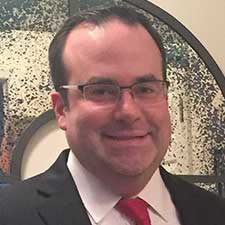Judge Jon O. Newman recently authored a book titled “Inferior Courts” – The History of the Existing and Former Federal Trial and Appellate Courts of the United States, 1789-2024.” The Federal Bar Council Quarterly met with Judge Newman to learn more about his fascinating new addition to legal scholarship and legal history.
As practitioners in the Second Circuit are well aware, Judge Newman has had a long and storied career.
Appointed by President Nixon to the U.S. District Court for the District of Connecticut and by President Carter to the U.S. Court of Appeals for the Second Circuit, he is now in his 53rd year as a federal judge. He is the 2016 recipient of the Devitt Award – the federal judiciary’s highest honor.
Judge Newman is also a prolific author, having written four books and over 60 law review articles. The title of his newest book, “Inferior Courts,” comes from Article III, Section 1, of the U.S. Constitution, which places the judicial power of the United States “in one Supreme Court, and such inferior Courts as the Congress may from time to time ordain and establish.” Judge Newman notes that the term “inferior” does not imply lesser quality; rather, “inferior” simply means below the Supreme Court, as the Supreme Court itself explained in Durousseau v. United States, 10 U.S. 307, 311 (1810) (“The terms supreme and inferior are correlative.”).
A COMPLETE HISTORY
When asked why he decided to write “Inferior Courts,” Judge Newman explained that he wanted to create the first complete history of all the existing and former federal trial and appellate courts. He hoped that “Inferior Courts” would be useful for courts, law libraries, scholars and law students.
The book reports the history of each existing federal trial and appellate court, as well as those federal courts that are no longer in existence. All the information in the book has been extracted from federal statutes; it is not based on letters or private papers of lawyers or judges.
Judge Newman said that the book covers three topics:
(1) The creation and changes in the geographic scope of the district and appellate courts;
(2) The increases in the number of judges; and
(3) The growth in the jurisdiction of each of these courts.
Among the interesting items Judge Newman reports is the “curious form of jurisdiction that was authorized for some district courts when the Nation began and was continued until well into the 19th century.” As the book explains, some district courts exercised “the trial court jurisdiction of the former circuit courts in those districts where a circuit court had not yet been established.” For instance, the 1789 Judiciary Act established a circuit court in 11 of the first 13 districts, but did not establish a circuit court in the District of Kentucky or the District of Maine. As a result, the district courts in Kentucky and Maine were given the trial court jurisdiction of a circuit court.
UNUSUAL JURISDICTION
The book reports the unusual jurisdiction of the old circuit courts, which had both trial court and appellate court jurisdiction.
Judge Newman was interested to learn that the Eastern District of Louisiana was placed in the U.S. Court of Appeals for the Ninth Circuit in 1837 before being transferred to the U.S. Court of Appeals for the Fifth Circuit in 1842. Closer to home, he points out that the U.S. Court of Appeals for the Second Circuit is the only court of appeals whose geographic scope has remained unchanged since the court was established in 1801.
Judge Newman notes an unusual feature of two other former courts. The United States Court for Berlin (1955-1990) heard only one case, and the Mixed-Slave Trade Courts (1862-1870) never heard any cases.
Overall, “Inferior Courts” is an extraordinary book that will serve as a useful research tool for years to come.

